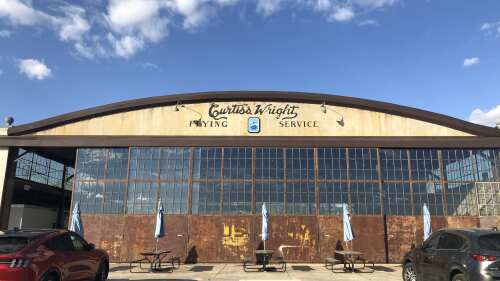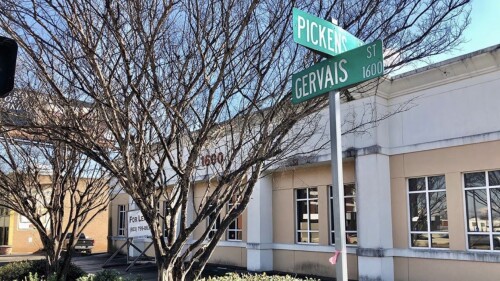Yesterday, the Center for Civil Rights History and Research at the University of South Carolina unveiled a new historical marker to commemorate the 60-year anniversary of the State House march.
On Mar. 2, 1961, hundreds of high school + college students marched on the South Carolina State House. The protest led to a pivotal Supreme Court ruling in the civil rights movement making history here in Columbia.
Edwards v. SC Historical Marker | Photo via COLAtoday team
During the student-led demonstration against segregation, attendees marched around the State House, some carried signage, and when told to leave they sang patriotic songs + hymns. Not long after it began, the protest ended with approx. 200 protesters arrested and convicted of disturbing the peace.
Student-led protest in 1961 | Image from Richland Library via the State Newspaper Archives
Just last year, Richland Library discovered handwritten entries in the Richland County Sheriff’s Department’s arrest book that were made and you can see the added details of the Supreme Court rulings. You can check those out here.
Following the arrests, 187 individuals appealed the conviction, and their case — Edwards v. South Carolina — was heard by the United States Supreme Court. Two years later, the court overturned the convictions, 8-1, and this case has been used as the precedent to protect the First Amendment rights of protesters ever since.
Protesters from 1961 at the State House March | Image from Richland Library via the State Newspaper Archives
The ceremony took place at the corner of Gervais and Main streets. Here is what happened:
🗣️ Reverend James Edwards, the lead plaintiff in the Supreme Court case was in attendance and spoke about his experience. Edwards was a student at Benedict College at the time, originally from the Town of Ninety Six, and he faced one of the largest fines + spent the most time in jail following the protest.
Reverend James Edwards at the unveiling of the Edwards v. SC historical marker | Photo via COLAtoday team
🗣️Representative Leola Robinson-Simpson read the resolution that was presented to Columbia SC 63 to commemorate the 60th anniversary of the march. She was one of the original protesters who was arrested in 1961.
Representative Leola Robinson-Simpson reading the resolution at the ceremony. | Photo via COLAtoday team
🗣️ Retired Chief Justice Jean Toal, who was the first female South Carolina Supreme Court Justice, spoke at the unveiling ceremony about the precedent this case served — protecting the first amendment rights of protesters moving forward. She was a student at Dreher High School at the time of the protest and was in attendance but was not arrested.
The historical marker was unveiled along with a new monument — We Shall Not Be Moved, which has the names of those who were arrested on Mar. 2, 1961. The artwork was commissioned by Columbia SC 63 and helped funded by Drip Coffee’s in-shop fundraiser last fall.
We Shall Not Be Moved monument with Columbia Mayor Steve Benjamin + protesters who were arrested during the State House march. | Photo via COLAtoday team

















